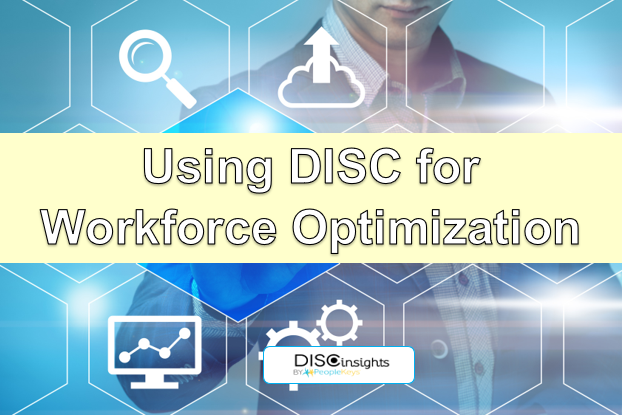- SHOP BY PRODUCT
- DISC TRAINING & CERTIFICATION TOOLS
- DISC RESOURCES
- BLOG
- SHOP BY PRODUCT
- DISC TRAINING & CERTIFICATION TOOLS
- DISC RESOURCES
- BLOG
- ALL ITEMS



As many organizations are finalizing year-end strategies and developing next year’s business plans, others have already taken a running leap into 2019 with iron-clad initiatives for growth and expansion. No matter which phase of strategic planning you are in, please don’t forget that “people” are our most significant investment and that our businesses are defined most effectively by our workforce. According to Human Resources Today, the macrotrends for workforce optimization in 2019 are dominated by record-low rates of global unemployment. Simply said, this means that workforce optimization, in a tight labor market, must be a top priority for any business entering the new year.
This fact is often forgotten, as businesses begin to automate and outsource many of their proprietary operations. Improper hiring, in turn, led many companies to either close doors or merge with others in efforts to save what has been left in the aftermath of dissolution. Vision is lost, and the bottom line becomes tainted. No SWOT or Regression Analysis can prevent a business from dwindling if our most precious asset becomes ignored. Implement Predictive Hiring, instead, when both analyzing and optimizing the workforce, hiring cycles and ongoing development initiatives. Productivity and performance will skyrocket, and the impact will be felt throughout the organization.
For those of you, who know very little about DISC, it is a methodology used to assess the behavior, personality, strengths and weaknesses of the internal workforce, customer base and the opposition, accordingly. It can be used to seize opportunities and break through barriers within the markets. We can use it as a tool to better captivate and cater to our audiences. Moreover, – and most importantly – we can use it to improve our workforce over time.
In DISC theory, we assess the actions, behaviors, and emotions of each personality involved within the business or hiring process. By doing so, we more effectively scout the right talent for each position that we are fielding for while strengthening the corporate hierarchy from within. Not only do we strengthen the business at its foundation, but we also evolve the corporate culture and create a more favorable environment in which business ultimately thrives.
In the “color pallet of personality,” we should seek a smart blend of behaviors and styles to truly maximize the potential of ongoing business initiatives. As a tool for unlocking human potential, DISC may help us to hire smarter and more effectively disrupt industry. Through complacency, we become comfortable. Through discomfort, we grow. By embracing shared goals together, we become more committed to vision, disciplined and willing to evolve.
Whether you are looking for a leader with an entrepreneurial spirit or someone who can motivate others to handle the most minute of tasks with sophistication, we need to find balance. The ultimate candidate would share characteristics from each of the personality traits. While possible, this candidate is a rare gem, unlikely to be found and highly in-demand. They are most likely employed by a larger organization – or running a successful business of their own.
Read more on How to Use DISC for Talent Acquisition.
Using tools such as Peoplekey’s Repruit or benchmarking metrics, however, we cut through the red tape and find qualified candidates through a highly comprehensive analysis of said personality types. Using internal applicant tracking systems, we save our company precious resources and time, while scouting out top talents for placement into our organization. Top talents will often cross into more than one personality type but will be more dominant in one area over another.
Through complex data mining, these tools will help us discover previous achievements by our candidates and how they can implement similar contributions at our organization. They help us to understand soft skills, capabilities and areas of expertise better. Growth is measured, in addition to the level adaptability of each candidate. We want to know what they did, how they did it and the impact of what was done, so that we can better relate this to our organization. Time, however, is of essence. Going through 200+ applications per position is redundant and misaligned with effective hiring procedures.
In 2019, seek only top talents. Find that balance for building successful teams by finding that median between nurture and nature, while pre-screening talents and before giving up on the existing workforce. Through improved retention, shorter hiring cycles and reduced turnover, you will cut costs to department hiring budgets for the training and onboarding of new hires, retraining of those, who fail to meet ongoing goals, and the cost per acquisition. Improving employee relations and establishing job security will improve the output of daily operations. Profits will soar.
Discovering the strengths and limitations of an existing workforce, internal teams and departments can grow, become fortified and evolve into individual powerhouses, unstoppable by our most ardent of competition. Identifying those strengths and weaknesses, we tie up loose ends and put position ourselves for increased greatness within the markets. By assessing the individual characteristics of each team member, we can enrich personal experiences in professional development for each contributor and develop the workforce on a more one-on-one basis. Improving personal, private and public perception of contributions, we further motivate individual contributors, and each team is more likely to exceed expectation in accordance with any goal or objective set forth across the organization.

© PeopleKeys. All Rights Reserved
WORKING DAYS/HOURS
Mon - Fri / 8:30AM - 5:00PM EST
